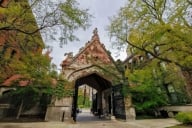You have /5 articles left.
Sign up for a free account or log in.
Plant lovers of the world, rest easy: the threatened 450,000-specimen herbarium at the University of Louisiana at Monroe has found a new home. Tens of thousands of Monroe’s other natural history specimens, including fish and reptiles, also will be rehomed on campuses across the South, according to USA Today. Monroe announced this spring that it needed help from other institutions to preserve the collections, lest they be destroyed to make room for a new sports facility. Outrage ensued, but a natural history crisis appears to have been averted.
Michael A. Camille, associate vice president for academic affairs, told USA Today that Monroe’s call heeded proposals from 18 institutions interested in one or more of the collections. A committee of museum curators and administrators recommended moving Monroe’s fish collection to a consortium headed by Tulane University, its reptile and amphibian collection to the University of Texas at Arlington, the insect collection to Mississippi State University, and the massive herbarium to the nonprofit Botanical Research Institute of Texas in Fort Worth. Transfers are in process and likely to be complete by August.
The Botanical Research Institute said in a statement that Monroe’s collection represents more than 99 percent of the species in Louisiana’s “vascular flora and is considered to be the state’s most complete record of plants. … Due to the size and breadth of this collection, its loss would have seriously impaired botanical scientific research not only locally within Louisiana but also nationally and even internationally.”
Ed Schneider, president and executive director of the institute, added, “Orphaned herbarium collections such as this one are just the type of acquisitions we had in mind as our headquarters building was being designed. Safeguarding and protecting plant specimens for research and education is our institute’s mission.”









